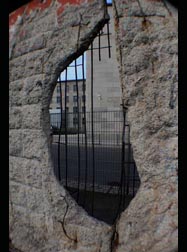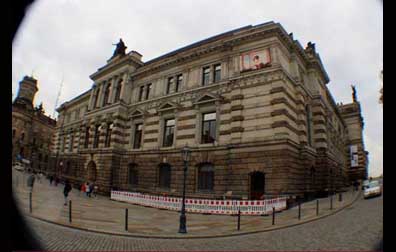
Adobe PDF File eBook Ordered From This Website Will Be Delivered Within 24-48 Hours from your confirmed order as we manually process each order. Thank you for your understanding.
AVAILABLE FOR SALE

"The Berlin Wall: Over 25 Years After Fall"
Tracking the Remnant from the Wedding District to the Oberbaum Bridge
If you are planning to visit Berlin, one of the most unconventional and fascinating tours should include tracing the path of the historic Berlin Wall.
Author and photographer Marques Vickers takes you on a detailed visual tour with his book “The Berlin Wall: Over 25 Years After Fall”. The 205-page edition showcases the changes, constructions and alterations to the terrain that for thirty-eight years divided Berlin. His 325 photographs intimately detail the core of the city’s center, commencing from the northern Wedding district to southern Oberbaum Bridge. Concise commentary illuminates the background of prominent structures, memorials and historical events.
Over twenty-five years have followed the permanent dismantlement of the concrete slab barrier. Few remnant sections still remain. The outline of the wall has been identified locally through dual rectangular cobblestones embedded in the streets, walkways and under structures. The reader accompanies Vickers on this visual pathway showcasing what remains and what has been reconstructed since the German reunification of 1990. Vickers’ prior visit to the city was in 1996 when many of the major construction projects first commenced.
According to Vickers, “Unified Berlin is not a mausoleum of antiquated remembrance. The city radiates vibrancy. It has successfully integrated the shame of historical actions, consequences and memorials into its present tense. The majority of new constructions are located within the former territories of East Berlin. That land was essentially vacant in 1989 when the Wall was first permanently breeched. Due to its previous proximity to the Wall, the real estate then was significantly undervalued. This valuation discrepancy no longer exists.”
Amongst his most notable images include the Brandenburg Gate, Reichstag, Adolph Hitler’s Bunker site, The Memorial to the Murdered Jews of Europe, Potsdamer Platz, Checkpoint Charlie, East Side Gallery, Lantag of Prussia Building, Topography of Terror Museum, foundational remains of the Gestapo headquarters, Oberbaum Bridge and the lone stretch of remaining undeveloped No Man’s Land in the core of Berlin. His visual documentary also includes residential, commercial and governmental buildings, cemeteries, memorials and neighborhoods.
The Berlin Wall’s creation did not immediately follow the conclusion of World War II. The East German Democratic Republic (GDR) was established in 1949 under Soviet Union occupation. Russian domination proved unpopular amongst a large percentage of the eastern population. A 1953 Berlin worker’s uprising directly challenged Russian authority and was brutally crushed. The sole outlet for protest and discontent became flight to West Germany via the portal of Berlin.
Within twelve years of existence, the GDR had lost 20% of its population, particularly badly need skilled laborers and professionals. At the summit of the exodus, approximately 1,000 people per day were defecting to the West. On August 13, 1961, East Berlin residents awoke to barbed wire fencing that had been installed dividing the city’s east and west sectors. Dual concrete barricades incrementally fortified this temporary barrier.
The failure of the GDR and the Berlin Wall remain valid lessons for today. Insight may be perceived regarding Russia’s renewed foreign policy aggressiveness and political discussions about the construction of national barriers.
Vickers’ edition illustrates how Berlin expediently revitalized desolate urban wasteland into aesthetic and functional relevance. “The Berlin Wall: Over 25 Years After Fall” is the perfect travel accompaniment for viewing a fascinating slice of Berlin many tourists overlook. The work can also serve as a valuable reference overview even if one never sets foot in the city.










Marquis Publishing is a publisher of paperback and electronic books.
MARQUIS PUBLISHING
California, USA
1 (707) 712-8062
marques@artsinamerica.com















